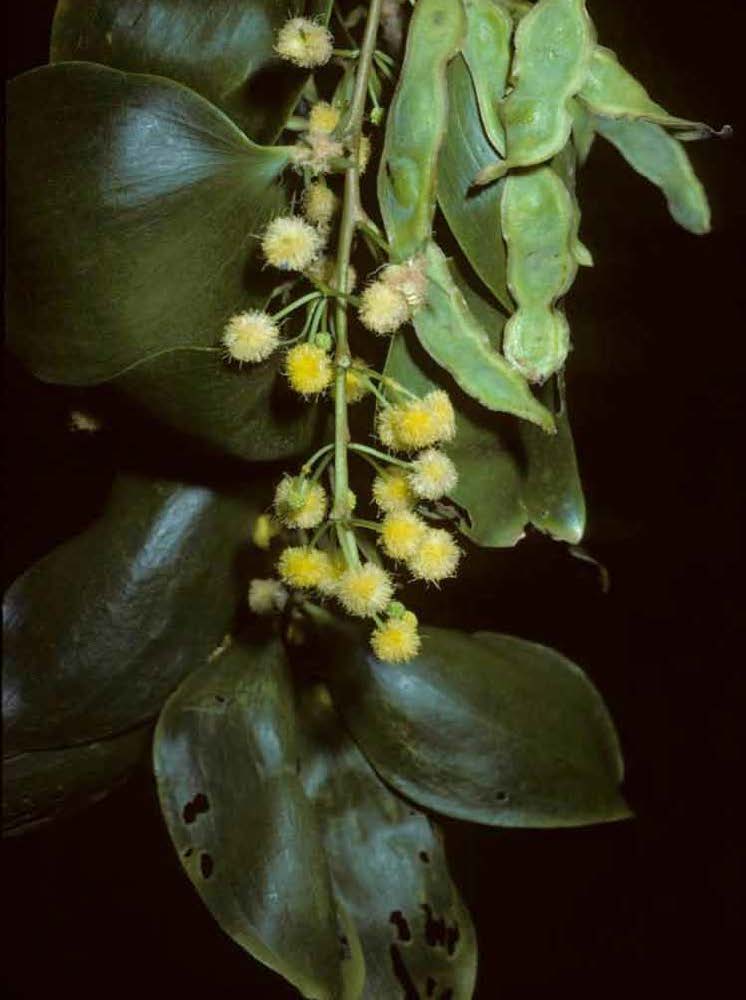
Small tree up to 8 m or more in height (but usually much less), with glabrous, longitudinally striate stems; bark gray-brown, green beneath, inner bark reddish, wood light tan. Leaves simple, alternate; blade an elliptic to suborbicular phyllode mostly 7–16 cm long, attenuate at the base, acute to rounded or subretuse at the tip; surfaces glabrous, with 5–14 similar, parallel, longitudinal veins prominent on the lower surface and having irregular reticulations between them; petiole 3–6 mm long. Inflorescence of 30–50 flowers in an axillary head about 6 mm in diameter, on a peduncle 5–18 mm long borne on a short axillary branch, several usually forming on the branch but only a few maturing. Calyx campanulate, of 4 or 5 narrow subspathulate lobes less than 1 mm long. Corolla of 4–5 free, tiny yellow, oblanceolate petals ca. 1.5 mm long. Ovary superior, 1-celled, style filamentous with a small terminal stigma. Stamens numerous, yellow, showy, exserted, filaments 1–2 mm long. Fruits in clusters of several (up to 12 or more), narrow, oblong, flattened legumes 6–15 cm long, somewhat constricted between the 3–10 dark, oval seeds that are 5–7 mm long. Flowering reported from July and October to December, but probably occurring periodically throughout the year, the fruits long-persisting.
Distinguishable by its small tree habit, parallel-veined leaves (phyllodes), small yellow flowers in pedicellate axillary heads, and flattened pods (legumes) somewhat constricted between the seeds.
SAVAII:
Reinecke 503—Matāutu coast.
Vaupel 365—Manase (Bishop Museum: 16 August 1905).
Christophersen 939—Beach near Falelima.
Christophersen 1931—Beach at Āvao.
Christophersen 2460—Beach at Sāfotu-Manase.
Christophersen 2774—Sandy shore near Faleālupo.
Whistler 100—One sapling on a sandy beach between Faleālupo and Tufutafoe.
Whistler 994—Shore east of Āsau Bay.
Whistler 3891—Shore east of Āsau Bay.
Whistler 8238—Shore at the south end of Faleālupo.
Whistler 11563—Littoral forest on the northeast side of Āsau Bay.
UPOLU:
Whistler 8373—Rocky coastal peninsula just west of a little bay between Matāutu and Sa‘anapu.
SINE LOC:
Whitmee 202—Without further locality.
Copyright ©2018 W.A Whistler. Data portal development has been supported through the cooperation of the Ministry of Natural Resources and Environment, The Government of Samoa.
We are currently actively uploading datasets for this project.
Powered by Symbiota software.Usage Policy.



